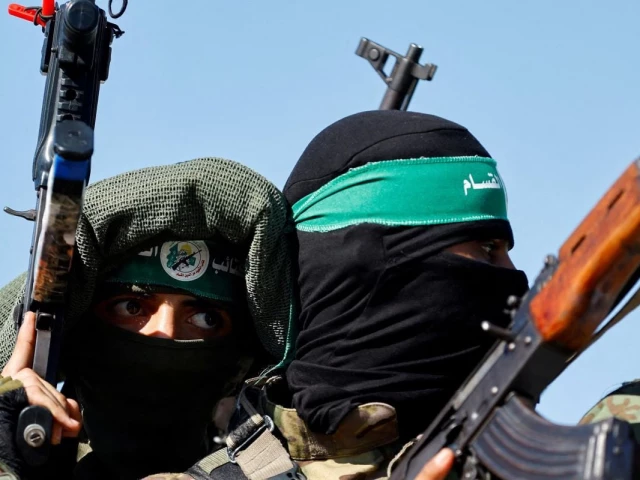Beijing, China, Aug. 15, 2025 (GLOBE NEWSWIRE) — Literary and artistic works themed on the Chinese People’s War of Resistance against Japanese Aggression (1931-45), be they classic works created during the war or works looking back on history, all carry historical memories and the national spirit. Through artistic forms, they cross the long river of time, allowing us to deeply feel the fearlessness and perseverance of the Chinese people during the War of Resistance against Japanese Aggression, while inspiring people’s patriotic feelings.
The Global Times launched this special series of Indelible Memories about literary and artistic works themed on the war to draw wisdom and strength from the spirit of the people.
On a scorching summer day, stepping into the resting hall at Beijing’s Imperial Ancestral Temple, visitors were greeted not only by a refreshing coolness but also by a profound sense of history. This gravity stemmed not just from the imposing centuries-old architecture, but even more from the collection of artworks on display – each capturing pivotal moments from the Chinese People’s War of Resistance against Japanese Aggression. In particular, a group of sculptures on the white central exhibition platform commanded special attention.
Each figure in this group of sculptures intensifies the visual impact of fear and despair through contorted bodies, hollow gazes, and torn garments. Some look up to the sky, some scream in silence, some struggle for survival, while others have already fallen, their lives lost. This is the work of Wu Weishan, former director of the National Art Museum of China. Titled Tao Nan, or Fleeing from Calamity, it is the theme sculpture for the expansion of the Memorial Hall of the Victims in Nanjing Massacre by Japanese Invaders.
On July 28, at the opening ceremony of this art exhibition, which highlights the perseverance and resistance of the Chinese people during the War of Resistance against Japanese Aggression, Wu told the Global Times that the purpose of creating these sculptures is to remember history, not hatred. “Art can serve to commemorate history and call for peace, fully expressing the Chinese people’s values and love for peace,” he said.
These sculptures are bearers of history, embodying the longing for peace. Such expressions run through generations of Chinese artistic creation – every line, every chisel mark, every brushstroke aims to ensure that people never forget.
Turning sorrow into power
The sculptures displayed in the main hall of the Imperial Ancestral Temple are, on average, only a few dozen centimeters in height, while their enlarged versions stand solemnly at the Memorial Hall of the Victims in Nanjing Massacre by Japanese Invaders in Nanjing, East China’s Jiangsu Province.
Taken as a whole, this group of sculptures resembles a powerful musical movement: rising, falling, flowing, ascending, soaring. Spatially, the energy these sculptures project envelops viewers in an atmosphere of deep compassion and sorrow. Even before entering the memorial, visitors are already touched, so that once inside, each sight of a bone fragment or a blood-stained garment evokes boundless grief and reflection.
In these sculptures created from 2005 to 2007, Wu avoided direct depiction of the Japanese army’s atrocities, choosing instead to focus on the victims, capturing the devastation and suffering of Nanjing’s residents during the massacre – their families shattered, their lives destroyed.
He explained that these works are meant to “bring the victims back to life,” allowing their last cries before death to express the shared voice of humanity. By giving form to the souls of all those who suffered, the sculptures become important vessels of the human spirit. Only in this way can artworks urge all humankind to reflect, so that the lessons of the past will never be forgotten.
Outside the memorial, the sculptures were set within a pool symbolizing the path to escape terror, depicting 10 groups of 21 figures fleeing their homes in the wake of the bloody massacre. Nearly life-sized, these sculptures enhance the sense of realism. Among them are an elderly son supporting his octogenarian mother as they flee, a violated young woman standing by a well, and a monk closing the eyes of the wrongfully slain as he escapes. The sculptures are cast in a silvery-gray tone, distinct from the familiar bronze and copper hues, symbolizing the survivors’ escape from overwhelming terror.
The piece that moved the sculptor most was one of an infant clinging to his deceased mother, seeking milk from her lifeless body. This work is based on the harrowing experience of Nanjing Massacre survivor Chang Zhiqiang’s family. Three of his younger brothers were bayoneted to death, his mother fatally stabbed in the lungs. Amidst tears, he placed his youngest brother beside their mother, and the infant crawled to her chest to nurse. That final drop of milk marked both an end and a fragile hope. By the next day, mother and child had frozen together in the bitter cold, never to be parted.
The process of creating these sculptures was far from tranquil for Wu. Immersed in historical research and interviews with survivors like Chang Zhiqiang and Xia Shuqin, he was deeply affected by the anguish and outcries captured in old photographs and personal stories. Many sleepless nights followed, and even as he walked through the old districts of Nanjing, he would sometimes imagine hearing the echoes of explosions and cries of slaughter.
Wu employed a variety of sculpting techniques – chiseling, striking, pounding, and molding by hand. He recalled working outdoors in the sweltering 38 C heat, laboring through the night for hours. His deep sorrow and anguish over this chapter of history were transformed into the speed and power of his artistic creation.
Looking further back, this passionate engagement with the history of the war – a fervor that transforms into powerful artistic energy – has also flowed from the hands of the elder generations of artists, many of whom witnessed these events firsthand. Their collective memory and creative expression have ensured that the tragedy and heroism of that era continue to live on, warning and inspiring future generations through the language of art.
Never forget
Xiao Feng, the 10th president of the China Academy of Art, passed away in Hangzhou on July 8 at the age of 93. He created a work depicting Canadian surgeon Norman Bethune treating Eighth Route Army soldiers during the War against Japanese Aggression, which was included in textbooks across the country. Xiao Ge, his youngest daughter, told the Global Times that her father had been proud all his life of being a literary and art soldier in the New Fourth Army.
Depicted in the painting jointly created by Xiao and his wife Song Ren is a makeshift operating table that was set up in a dilapidated temple not far from the front lines. Outside, the sounds of war rage on, while inside, Bethune stands calm and focused, his brow slightly furrowed and lips pressed tightly together as he meticulously performs surgery on a wounded soldier. In the background, a vigilant guard stands watch at the temple door, ever alert to protect the scene within.
Critics note that through artistic treatment, the image’s sense of narrative, drama, and conflict is enhanced in the painting, effectively highlighting Bethune’s contributions to resisting aggression and pursuing peace.
Xiao’s works are mostly tied to his experiences and memories from the war. In his creations, there have been images of guerrilla fighters maneuvering through the Luoxiao Mountains, New Fourth Army soldiers bidding farewell to Jiangnan, officers and soldiers watering their horses by the Yangtze River, and warriors hidden among reeds. His works go beyond mere narratives of suffering, focusing instead on capturing moments of warmth amidst the chaos of war.
“They (Xiao and Song) pursued truth, goodness and beauty, worked for their beliefs and the people all their lives, and finally donated all their works to the people,” the painter’s daughter said.
On the eastern side of the exhibition hall displaying Wu’s sculptures, the painting Victory and Harmony by post-1990 artist Hong Fangzhou hangs on the red wall of the East Wing Hall of the Imperial Ancestral Temple, quietly awaiting an audience. This artwork is divided into two main sections of white and red, blending fragments of war – like the remnants of shells and the blood and tears of heroes – with the joyful laughter of people celebrating peace after victory. The stark contrast between the two sides further underscores the preciousness of peace.
From Xiao, a witness and survivor of war, to young artist Hong, each generation of creators has used their own unique perspectives and artistic forms to capture that history of blood and fire, passing on the longing for peace.
As Wu expressed in a poem he inscribed upon completing this group of sculptures:
With unspeakable sorrow, I recall those blood-soaked storms;
With trembling hands, I caress the souls of the 300,000 departed;
With a child’s pure heart, I engrave the pain of this suffering nation.
I pray, I hope, for the awakening of this ancient people – the rise of the spirit!
Source: Global Times:
Company: Global Times
Contact Person: Anna Li
Email: editor@globaltimes.com.cn
Website: https://globaltimes.cn
City: Beijing
Disclaimer: This press release may contain forward-looking statements. Forward-looking statements describe future expectations, plans, results, or strategies (including product offerings, regulatory plans and business plans) and may change without notice. You are cautioned that such statements are subject to a multitude of risks and uncertainties that could cause future circumstances, events, or results to differ materially from those projected in the forward-looking statements, including the risks that actual results may differ materially from those projected in the forward-looking statements.






